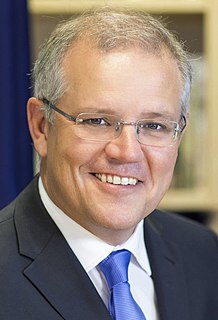Elections were held on 5 December 1964 to elect members to half of the 60 seats in the Australian Senate. There was no accompanying election to the House of Representatives, as Robert Menzies had called an early House-only election the previous year. As with the previous Senate election, the Coalition held exactly half of the seats in the chamber; the Democratic Labor Party and independent senator Reg Turnbull held the balance of power.

The Senate is the upper house of the bicameral Parliament of Australia, the lower house being the House of Representatives. The composition and powers of the Senate are established in Chapter I of the Constitution of Australia. There are a total of 76 Senators: 12 are elected from each of the six states regardless of population and 2 from each of the two autonomous internal territories. Senators are popularly elected under the single transferable vote system of proportional representation.

Sir Robert Gordon Menzies,, was an Australian politician who twice served as Prime Minister of Australia, in office from 1939 to 1941 and again from 1949 to 1966. He played a central role in the creation of the Liberal Party of Australia, defining its policies and its broad outreach. He is Australia's longest-serving prime minister, serving over 18 years in total.
| Party | Votes | % | Swing | Seats Won | Seats Held | Change | ||
|---|---|---|---|---|---|---|---|---|
| Liberal–Country coalition (total) | 2,362,081 | 45.70 | +3.62 | 14 | 30 | ±0 | ||
| Liberal–Country joint ticket | 1,261,592 | 24.41 | –8.75 | 5 | * | * | ||
| Liberal (separate ticket) | 1,038,130 | 20.08 | +11.80 | 8 | 23 | –1 | ||
| Country (separate ticket) | 62,359 | 1.21 | +0.56 | 1 | 7 | +1 | ||
| Labor | 2,308,670 | 44.66 | –0.04 | 14 | 27 | –1 | ||
| Democratic Labor | 433,511 | 8.39 | –1.43 | 2 | 2 | +1 | ||
| Communist | 37,915 | 0.73 | –0.89 | 0 | 0 | 0 | ||
| Independent / Ungrouped | 26,873 | 0.52 | –1.25 | 0 | 1 | 0 | ||
| Total | 5,169,050 | 30 | 60 | |||||
- Notes
- In New South Wales and Queensland, the coalition parties ran a joint ticket. Of the five senators elected on a joint ticket, three were members of the Liberal Party and two were members of the Country Party. In Western Australia, the coalition parties ran on separate tickets. In South Australia, Tasmania, and Victoria, only the Liberal Party ran a ticket.
- The sole independent was Reg Turnbull of Tasmania; he did not face re-election in 1964.

New South Wales is a state on the east coast of Australia. It borders Queensland to the north, Victoria to the south, and South Australia to the west. Its coast borders the Tasman Sea to the east. The Australian Capital Territory is an enclave within the state. New South Wales' state capital is Sydney, which is also Australia's most populous city. In March 2018, the population of New South Wales was over 7.9 million, making it Australia's most populous state. Just under two-thirds of the state's population, 5.1 million, live in the Greater Sydney area. Inhabitants of New South Wales are referred to as New South Welshmen.

Queensland is the second-largest and third-most populous state in the Commonwealth of Australia. Situated in the north-east of the country, it is bordered by the Northern Territory, South Australia and New South Wales to the west, south-west and south respectively. To the east, Queensland is bordered by the Coral Sea and Pacific Ocean. To its north is the Torres Strait, with Papua New Guinea located less than 200 km across it from the mainland. The state is the world's sixth-largest sub-national entity, with an area of 1,852,642 square kilometres (715,309 sq mi).

Western Australia is a state occupying the entire western third of Australia. It is bounded by the Indian Ocean to the north and west, and the Southern Ocean to the south, the Northern Territory to the north-east, and South Australia to the south-east. Western Australia is Australia's largest state, with a total land area of 2,529,875 square kilometres, and the second-largest country subdivision in the world, surpassed only by Russia's Sakha Republic. The state has about 2.6 million inhabitants – around 11 percent of the national total – of whom the vast majority live in the south-west corner, 79 per cent of the population living in the Perth area, leaving the remainder of the state sparsely populated.










